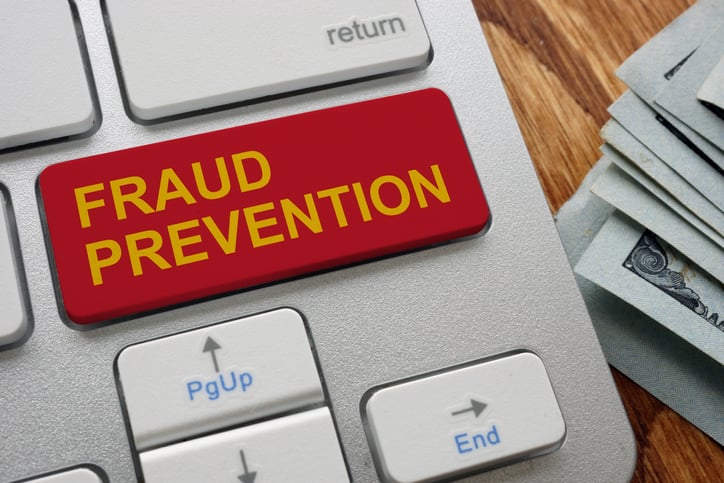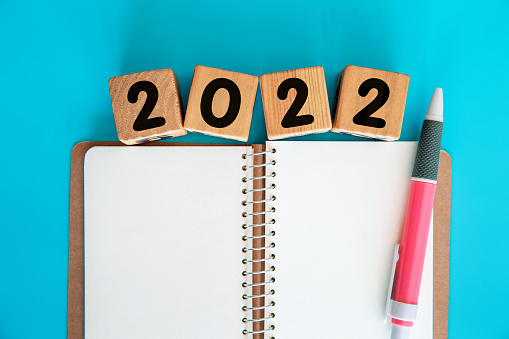10 Nonprofit Email Marketing Ideas
 by Julie Kennon
by Julie Kennon
Are you looking for fresh new email ideas for your nonprofit's supporters? Here's a list of ten great ideas to try!
-1.png)
Nonprofits know they should be sending emails to donors often, but sometimes it seems like every single email sounds the same. How can you spice up your emails so they get noticed?
Let's start at the beginning. Email is free and is a blank canvas you can use to create your nonprofit’s voice and showcase an engaging personality.
Maybe you already know that.
Maybe you already have a CRM or other system that will automate email marketing for you.
Maybe you are excited to launch a year-long email campaign that will culminate in the most successful fundraising push of your career.
But then you sit at your computer.
BAM.
Writer’s block.
How can you think of a nice way to ask for money? Or a heartfelt way to communicate your mission? Every subject is dull and tired and feels, if we’re honest, a little too self-serving.
After about a million conversations with nonprofits about outreach, an inside look at what’s effective, and some honest discussions with donors, we’ve got a few (or 10) ideas you can use to spice up that once-a-week email we suggest you send to your donors.
So, without further delay, here’s a list of emails your nonprofit can send to engage donors.
Ten Ideas for Nonprofit Emails
1. The Welcome Email
Don’t roll your eyes! This is an overlooked power move. Would it surprise you to know that welcome emails generate more revenue per email than any other promotional email? The average open rate is 91.43% and the average click-through rate is 26.9%. Those are some seriously high percentages.
A robust CRM will integrate your donor records and email marketing, so you can automate your welcome emails. They should be sent as soon as someone is added to your database: they can donate money, volunteer for an event, donate in-kind goods, sign up for your newsletter, or just show interest in learning about your organization. Using automation ensures that user error doesn’t hurt donor relationships. It also makes your team more efficient. Automation allows you to take low-hanging fruit, like repeatable tasks and setup processes, and offload it to the technology.
And what should the email say? This is where we talk about personality. If you’ve read any emails from Pamela Grow, a fundraising consultant we love, you'll know that you always read her email because it’s just interesting. Pam is funny, full of stories, and loves to connect everyday happenings with lessons for nonprofits.
Check out the introduction to an email I received a few weeks ago:
Happy Thursday morning, Julie.
She drove all of us bonkers.
But then, one day, just like that, she didn’t.
Don’t get me wrong. My Grandma Grace Grow was a petite package of love, fun, and charm.
See what I mean? You’ll read that email, all the way until she tells nonprofits to “quit mucking around” and drops in some actionable tips. She weaves her personality and story into a bit of advice. It’s brilliant!
Your welcome email should:
- Have an engaging subject line.
- Show personality and use warm language.
- Highlight your mission.
- Clearly show how donations support that mission, ideally through storytelling.
- Thank them, by name, for whatever they did. (Another vote for an integrated CRM and personalization.)
- Give them a clear path to donating again. Only one call to action!
Keep your email friendly, benefit-laden, and clear. The goal is for the recipient to feel recognized and appreciated and to know exactly what the next step is and how to take it.
2. The Newsletter Email
This is one that is a kitchen sink—dump anything you want into it. It’s a wonderful way to showcase events, like your nonprofit’s anniversary, or announce campaigns, share information your donors will appreciate, and update them on your progress.
A newsletter can be a conversation. It’s easy to say, “Remember last week when we talked about....” and let donors feel like they’re engaged in a discussion. You can carry thoughts over from week to week, which also compels some to go back and find an earlier email. But don’t be too cryptic or you’ll annoy readers.
We’ve seen the evolution of newsletters move from highly designed, carefully curated content to emails that are more casual and conversational, like the one we mentioned from Pam Grow. You can pack a lot of content and news while telling a story.
Some of our best newsletter tips include:
- Have a “friendly from”— such as the from being “CharityEngine Articles” and the subject being “10 Nonprofit Email Marketing Ideas.” It helps explain the subject a little better.
- Put some thought into your subject line. Personalize it when possible and add an emoji or two at the beginning (won’t get cut off and draws attention). These are known to increase open rates by more than 26%!
- Add a subscribe button (and an unsubscribe link in the footer).
- Keep your content relevant and informative.
3. The Survey Email
This is a fun one because it puts engagement front and center. You can ask your readers to click a link and answer two or three questions about why they donate (golden info!) or what would cause them to increase their donation (golden-er info!). You can ask them their favorite side dish at Thanksgiving or to vote on the cutest office dog.
The point of these emails is several-fold:
- You aren’t asking for money; you’re telling a story and engaging them as people.
- You are quite literally starting a conversation.
- You’re getting insights into your donors.
This great article from FastCompany talks about how effective a question can be when that question isn't, “Will you donate?” (There’s a time and place for that request, and we'll get to it.)
4. The Holiday Email
We have written about year-end giving so much because it’s when most nonprofits make most of their money, so engaging your donors during the year-end holidays is a no-brainer. But are there other holidays you can mark with your donors?
For example, the first Wednesday in November has been designated National Stress Awareness Day.
Google a visual breathing exercise and send an email urging your readers to take a moment to chill out! You can find a day that celebrates your mission (World Rainforest Day is June 22 and National Food Bank Day is the first Friday in September) or declare a day “Supporters of XYZ Nonprofit Day.”
Show photos of your team and volunteers dressed in ugly sweaters. A zany reason to celebrate will capture attention, highlight your mission, and maybe get a laugh, all of which are the bricks that build good donor engagement.
5. The Profile Email
Storytelling is a drum we beat often, and the profile email is a great example of how you can showcase your story. What are the effects of your mission? Pick a person or the result of work your nonprofit has done and tell the tale. Bring your supporters into the story so they have a deep understanding of why they donate.
If, for any reason, you can’t talk about the people you help or the mission you serve, do a round of rapid-fire questions with your executive director or a board member. Have that person talk about how many families you’ve served, unwanted animals you’ve saved, or votes you changed.
Use video in these emails, which will help to tell the story. Let video support the words in the email.
The purpose of this email is to connect your supporters with the good your organization does. Any way you can draw a direct line from my $25 to a child walking into school with a full backpack will increase my passion for your nonprofit. A passionate donor is a very, very valuable donor.
6. The Fundraising Email
We told you there’s a time for an ask, and now we’ll share with you the art of the ask. It’s never fun to ask for money, but it’s also the main purpose of a nonprofit’s campaign. Here are some tips we like to share:
- See the earlier advice on a subject line. Nail it...this is your chance to get someone to open your email.
- Be honest and completely transparent. “We know it seems like everyone is asking you for money these days, but we have 1,000 local families who can’t afford groceries this week. Can you help put something in their cabinets?”
- Segment your list, which is easy with a good CRM. Make sure your message resonates with each segment.
- And to that point, test your email. In an A/B test, you send two identical emails to two smaller groups of people, changing only one thing (like the subject line). Measure which email is opened more and use that version for your bigger send.
- Keep it simple. You have a worthy cause and you’re asking for support. A compelling image, a brief headline and a clear CTA are really all you need.
7. The Shocking Statistic Email
If you knew that a humane society saved an abused animal every thirty minutes, that might compel you to action. What if you knew how many children in your county went to bed hungry every night? Chances are, you’d want to feed them.
You, as a nonprofit, know the need is great. But insulated in daily life, your supporters might have lost focus of that need, and reminding them is a surefire way to get their attention.
There are many ways you can communicate need—build your statistics into a graphic representation of your work. Use video and have one of your supporters or benefactors speak directly to readers. It can be uniquely yours, but find a way to bring your mission home to the people that want to help.
8. The FOMO Email (Fear Of Missing Out)
This sneaky email is going to show how great of an event you threw! While technically it’s a wrap-up email sharing results, thanking volunteers, and illustrating the importance of your supporters and their donations, it’s also the perfect time to encourage those who missed it to put it on next year’s calendar. Yes, make them jealous!
Include pictures, video, screen shots of social media comments, and a great headline. When you include people pictures, everyone who went to the event will scroll to see if you caught a shot of them. Big groups shots are helpful.
While hitting the FOMO button is helpful, there are some standard parts of an event or campaign wrap-up that you want to include:
- A heartfelt thank you to your donors
- A shoutout to MVPs and volunteers
- A clear view of where the money raised went
- A tease for your next event, if you have one planned
9. The Advocacy Email
If you are a nonprofit involved in advocacy, it’s essential that you help your supporters keep their fingers on the pulse of the issues. An overview of local, state, and national issues you’re monitoring will remind supporters of their commitment to your cause.
Another helpful tip is to include a link in your email that will allow recipients to take action or encourages them to share the advocacy efforts. That will fortify your efforts and even help you identify new supporters.
Good advocacy emails do a few things:
- Succinctly explain the issue
- Thank supporters
- Offer a clear call to action
You can also list different ways to get involved: send emails, circulate petitions, volunteer for an event, participate in a peer-to-peer campaign. Whether your supporters want to donate time or money, they’ll have options.
10. The Partner Email
Think about the supporting cast helping your nonprofit raise money, plan events, and advancing your mission. For example, many of our clients partner with Double the Donation to increase funds raised. Is there a local business sponsoring an event or offering a workplace giving program? Are you the recipient of in-kind donations, like office or warehouse space?
A partner email publicly thanks the organization helping yours and alerts readers to opportunities they might not know exist, such as their company doubling their gift. It’s worth asking if your partners will share a similar email with their database, and include a link back to your site to donate!
P.S. Email Best Practices
Just in case you want a quick reminder, here are some tips.
Regardless of which type of email you send, you will want to pay attention to two things: getting the email delivered, and then getting it read.
Email deliverability is a hot topic with our clients—our guide to nonprofit email deliverability is one of our most-read pieces of content. And while some of it is out of your control, you can make some choices that will help your numbers. These include using a shared pool, keeping your email lists clean, avoiding spammy language, and giving readers a clear path to unsubscribing.
But your content matters, too, because if it’s kind of blah, no one will read it. Here are some tips to spice it up, no matter what type of email it is:
- Don’t sleep on your subject line. Make it snappy and short and offer a teaser so they’ll click. Test it on a site that will grade your submission and offer ideas.
- Also don’t sleep on your friendly from. Keep this consistent over a campaign so your emails are easily identifiable.
- Put your most important information in the first line.
- Make your email easy to skim. Research shows you’ve got about ten seconds of someone’s attention. Subheads help; if you wanted to know the ten types of email in this article, you could figure it out by scanning the bolded subheads.
- And break up text, with bullets or graphics, to keep it readable. No long paragraphs or it doesn’t feel like a conversation.
- Add images but make sure they’re compressed so they won’t load slowly, and don’t forget your alt text for accessibility.
- Include a clear next step or CTA. Test button CTAs versus text CTAs. Test content and colors. We’ve found a bright orange works best with our audiences!
- Use humor when appropriate – emails are an easy way to establish the voice and personality of your nonprofit.
The single biggest time saver for a nonprofit is email automation. You need human brains to think of clever email campaigns, but then let software do the heavy lifting. See what it's like to work with us, or we’ve got a good offering if you’re in the market for an all-in-one CRM, not just an email tool.

.png)

